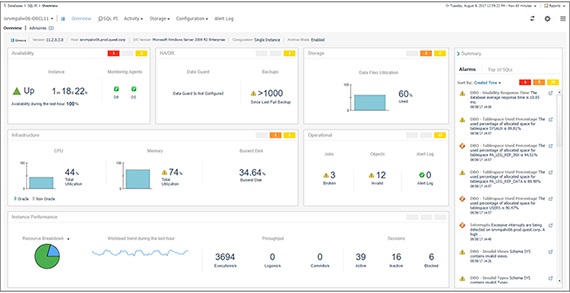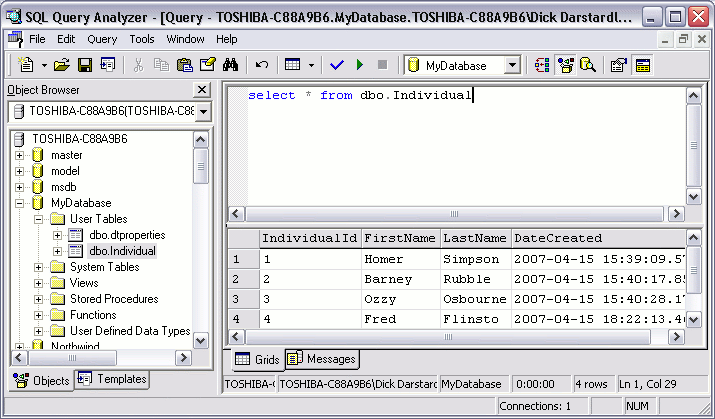Performance tuning is an important part of ensuring optimal performance when using Oracle databases. It’s a process that involves analyzing and optimizing the various components that make up your database, such as query optimization, data design, application design, logical structure, memory allocation, and access paths. Here’s a closer look at each of these components and how to go about optimizing them for the best possible performance.
Query Optimization: Query optimization involves examining your queries to determine which ones are consuming the most resources and then making changes to improve their efficiency. This can include changing the query structure so fewer data is returned or including additional criteria in the WHERE clause, so fewer records are processed. You can also use indexes to speed up query processing times or use hints to change the optimizer’s choice of the execution plan.
Data Design: Data design deals with how data is stored in tables and other objects within your database. This includes making sure that all columns are properly indexed and that redundant data isn’t stored unnecessarily. It also involves making sure that table structures are properly normalized to reduce storage requirements and improve query performance.
Application Design: Application design refers to how applications interact with your database. This includes ensuring that code is written efficiently and any processes are optimized for speed and scalability. Additionally, it’s important to make sure that your application is configured correctly within the database environment itself so as not to waste resources or cause unnecessary contention between processes.
Logical Structure: The logical structure of a database deals with how objects such as tables, views, indexes, constraints, and triggers work together as a whole. This includes examining relationships between objects, identifying potential issues such as missing indexes or incorrect foreign key relationships, and ensuring optimal performance across multiple queries or transactions by reorganizing objects accordingly.
Memory Allocation: Memory allocation refers to how memory is allocated within your system to ensure its efficient usage by different processes running at once. In Oracle databases, this can be done using a variety of parameters such as SGA_TARGET or SHARED_POOL_SIZE which can be tuned according to workloads or other factors such as available RAM on the server itself.
Access Paths: Access paths refer to how data is accessed from disk when running queries within Oracle databases. This includes examining how indexes are used (or not used) when executing SQL statements as well as looking into table partitioning strategies if applicable – both of which can help speed up certain types of queries significantly if used correctly.
I/O & Physical Structure: I/O & physical structure deals with hardware-level aspects of running an Oracle database such as disk storage configurations (RAID levels), filesystem layouts, memory organization (NUMA vs UMA architectures), etc., all of which have an impact on overall system performance – especially when dealing with very large datasets or high volumes of traffic on concurrent connections.
By taking a proactive approach towards tuning each component mentioned above you should be able to get significant improvements in overall performance from your Oracle database environment – leading to increased productivity and better user experience for those who rely on it!

Performance Tuning Techniques in Oracle
Performance tuning in Oracle involves a combination of techniques to improve the performance of an Oracle database. Generally, performance tuning involves optimizing the usage of resources like memory, CPU, and I/O. The following are some common performance-tuning techniques used in Oracle:
1. SQL optimization: This includes identifying inefficient SQL statements and rewriting them to reduce resource consumption. Optimizing joins and indexes can also help improve query performance.
2. Index optimization: Re-evaluating existing indexes to reduce the amount of data that needs to be scanned for a query can significantly improve performance. Indexes should be regularly rebuilt and analyzed for fragmentation.
3. Partitioning: Partitioning tables can help reduce I/O by breaking up large tables into smaller chunks that can be managed separately.
4. Database configuration: Setting up the database with optimal configuration parameters like memory size, buffer cache size, etc., can help ensure that your database is operating at peak efficiency.
5. Resource utilization monitoring: Setting up monitoring tools to track resource utilization on your system can help identify potential bottlenecks and areas where tuning is necessary.
6. Automated tools: Many vendors provide automated performance tuning tools that will automatically analyze your database and recommend changes to optimize system performance.
Improving Oracle Performance
Improving your Oracle performance requires a multi-faceted approach that covers hardware, software, and administration.
At the hardware level, you might consider upgrading your server resources such as memory, CPU, and disk storage to ensure you have enough capacity to support peak usage times. Additionally, configuring the server for optimal performance settings can help improve overall system performance.
On the software side of things, you’ll want to ensure that your Oracle database is running the latest version with all applicable patches and updates applied. Additionally, setting up an appropriate backup strategy and regularly scheduling maintenance tasks can help keep your database running smoothly over time.
For administration best practices, consider setting up access control rules so that only authorized users can access the database and its data. Additionally, creating an optimized indexing strategy can help improve query performance by allowing the database engine to quickly locate relevant data without having to scan through every record in a table. Finally, regularly monitoring query performance and optimizing queries as needed can help ensure that your queries are running as efficiently as possible.
Improving Query Performance in Oracle
Making queries faster in Oracle can be achieved by following several best practices. Firstly, it is important to clarify the goals of the query and identify high-impact SQL statements that will have the most significant impact on query performance. Secondly, you should identify the execution plan of your query to ensure that it is optimized and efficient. Thirdly, you should avoid large scans when possible and optimize SELECT statements to reduce their cost. Finally, consider using a third-party tool to further optimize queries and improve performance. By following these best practices, you can make your query faster in Oracle and get better results from your database.
Resolving Performance Issues in Oracle Database
Performance issues in Oracle databases can be resolved by following several best practices. First, it is important to identify the root cause of the issue by using tools like Oracle Performance Analyzer and AWR Reports. This can help pinpoint the specific areas that need to be addressed.
Next, DBAs should focus on improving SQL execution efficiency by writing efficient queries, minimizing full table scans, and utilizing indexes correctly. They should also use the query optimizer to optimize SQL statements for better performance.
Additionally, DBAs should manage operating system resources such as CPU utilization, memory usage, I/O operations, and network bandwidth to ensure optimal performance. They should also optimize storage performance by configuring RAID levels and storage disks appropriately. Finally, they should configure memory parameters such as SGA_TARGET and PGA_AGGREGATE_TARGET properly to improve overall database performance.
Improving Index Performance in Oracle
Improving index performance in Oracle mainly involves creating appropriate indexes and using them effectively. Indexes should be created on columns that are frequently used in WHERE clauses, JOIN conditions, and ORDER BY clauses. Additionally, indexes should be regularly analyzed to ensure they are being used effectively.
When creating an index, the order of the columns being indexed should be considered carefully. Oracle supports both ascending and descending indexes, so if a query often sorts data in either direction, an index that matches the sort order should be created for better performance. Additionally, when creating composite indexes (indexes with multiple columns), the most commonly used columns should be specified first to improve query performance.
Oracle also supports bitmap indexes which can be useful for storing data with low cardinality (data with few distinct values). Bitmap indexes can provide faster retrieval times than regular B-tree indexes when working with low-cardinality data such as gender or marital status; however, they can take up more storage space due to their specific structure.
Finally, it is important to consider how clustered the row data is when creating an index. If the row data is tightly clustered then an index scan may take less time than a table scan since it takes less time for Oracle to read all of the related rows from a single page; however, if the row data is not clustered then it may take longer for Oracle to read all of the related rows from multiple pages which could increase the percentage of table scans over time.
Conclusion
In conclusion, performance tuning in Oracle is a critical component to the successful operation of any system. Tuning involves making adjustments to the database design, business rules, data design, application design, logical structure of the database, database operations, access paths, memory allocation, and I/O and physical structure. Each step requires careful analysis and consideration in order to maximize the performance of an Oracle system. With proper tuning techniques and optimization strategies, an Oracle system can be as efficient as it can be.








